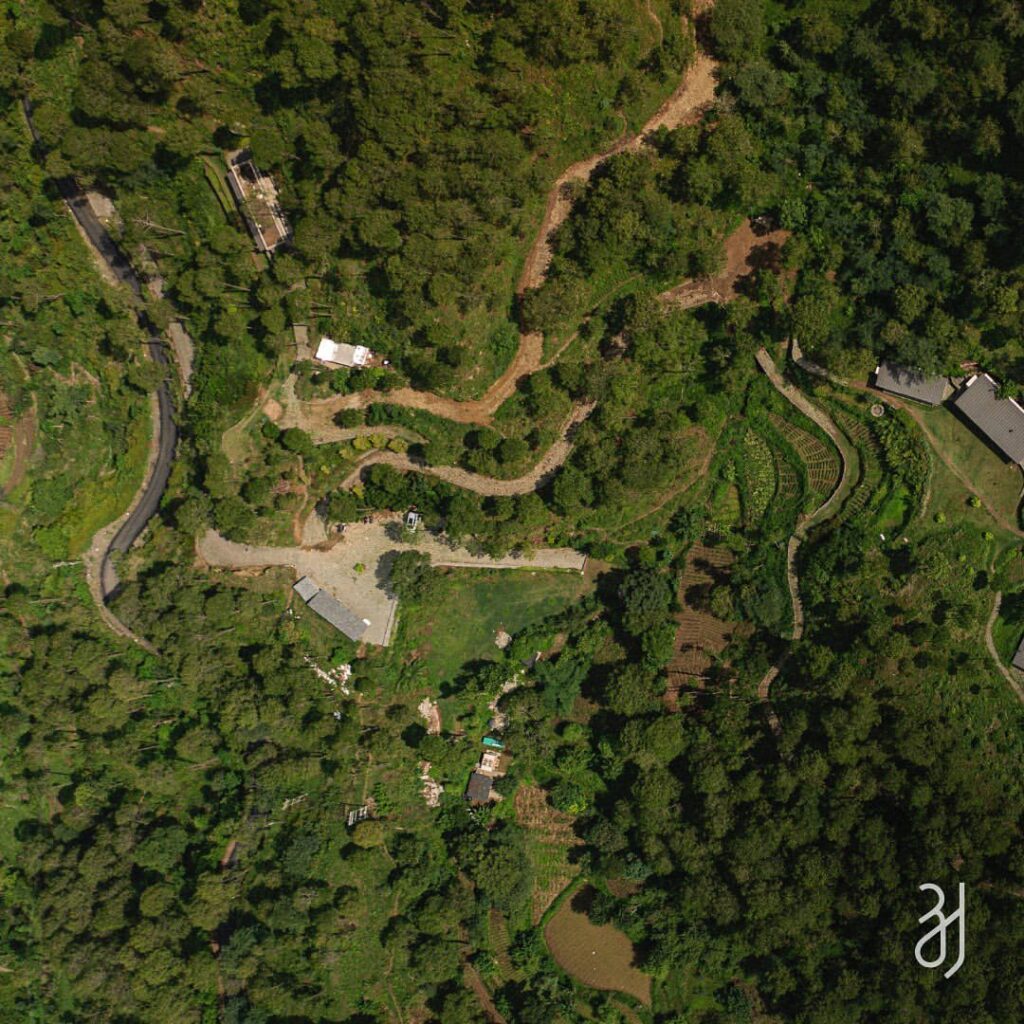Nature’s safeguarded traits and communal innocence stitch a fabric of experiential travel at Amaya. Tucked away in Darwa Village, near Kasuali, this boutique hospitality venture revives the Himalayan culture that has been preserved over generations. Chatter about mythology and agriculture with warm village folk and decipher the several signs of simplicity embedded in their rural life.
Dig into the very roots of Himalayan mindsets and personalities with Amaya’s surrounding communities. Their cultural influences seep into the boundaries of this property; evident in its cement-free built that whispers stories of the land’s rustic past.
Unlike the topography of more common hill stations like Shimla, this area of Kasauli isn’t dominated by the modern engineers of our civilisation. On the contrary, the terrain flashes its natural contours, topped with aesthetic rolling hills and an unscathed view of snow-laden peaks. It’s within this timeless scenery and the soft sounds of locals chitter-chattering that you’ll feel a cultural discrepancy from urban towns.

Embracing is a part of the culture here. The expansion of Britain’s rule in India meant their cantonment area grew with time. That being said, expect a touch of modernity with wooden homes and wrap-around porches overlooking gardens secured by beautiful picket fences. The likes of Ruskin Bond (author), Edward Dyer (beer brewer), Khushwant Singh (journalist), and Vivan Sundaram (artist) graced the land during the pre-and post-British era.
Drop in at the SSAF Kasauli Art Project or find a way to experience the malt whiskey brewing process at the Mohan Mekan factory – both have cultural representations of Kasauli’s way of manoeuvring through craftsmanship.

While the brewery is abundant with bougainvillaea and copper shop-made oak barrels, the art centre houses revolutionary and futuristic architecture, theatre enthusiasts, and filmmakers. Above all, don’t miss a trip to Christ Church. The stained-glass windows accommodate sun-dials, offering some cultural insights into how the villagers functioned in an era where rapid tech was absent.
The air around Amaya narrates ancient lore, and the soil holds stories of millennia. Every indoor and outdoor space treats guests to sights of the architectural wisdom of Darwa village. Each stone, beam, and window frame at Amaya proves its harmony with nature, inspired by Darwa’s traditional Kath-Khuni architecture.



The technique, a subtle combination of old-school engineering and traditional home décor, interlocks wood and stone without any nails. As a result, each structure can sustainably breathe and withstand the test of time and tremors.
Amaya’s edifices mimic these practices, not as any trending nod to sustainability but as a heartfelt bow to the ingenuity of Darwa’s ancestors. The offbeat inclusions at this boutique property, from attractive copper roofing to dry-stack stone walls, all embody the spirit of the locals and their culture.
Bijoy Jain, the architectural mastermind who materialised the founder’s vision, says, “You have to impregnate people with this ethos, which is incredibly hard, but once you do, it makes all the difference. Because then, you have a shared collective culture, one that’s centred on the idea of the whole rather than the self.”
Notice the absence of boundary walls outside Amaya’s rustic homes. This setup, despite bringing in privacy for residents, also accommodates a certain degree of openness. The founders at Amaya have patiently worked over a decade to lay the foundation of a revived agricultural land-turned-estate by regional inhabitants.
A standout cultural addition is the web-like arrangement of pathways to stroll on and water channels that dip into paddy fields. Amaya’s homes, made of timber, bricks, and local marble, sit firmly on these terraced areas, presenting splendid views of nature’s booming wonders.
